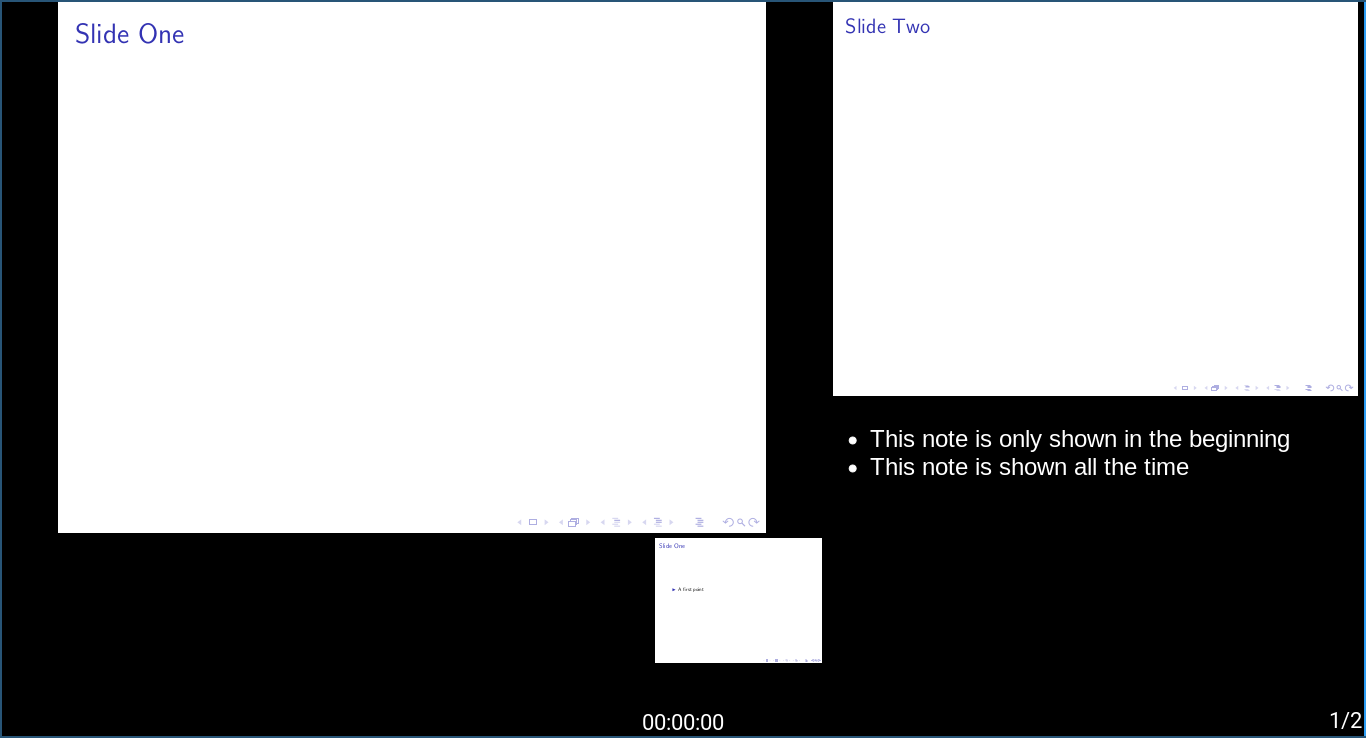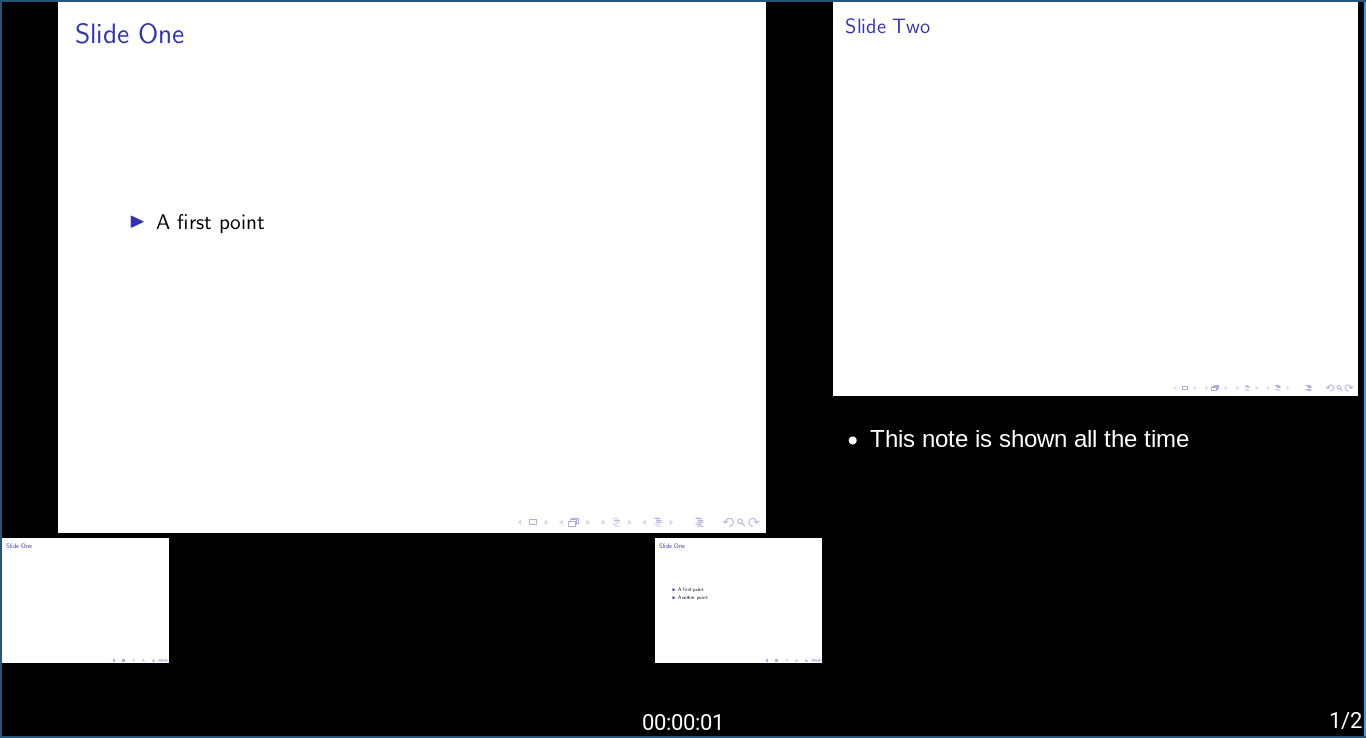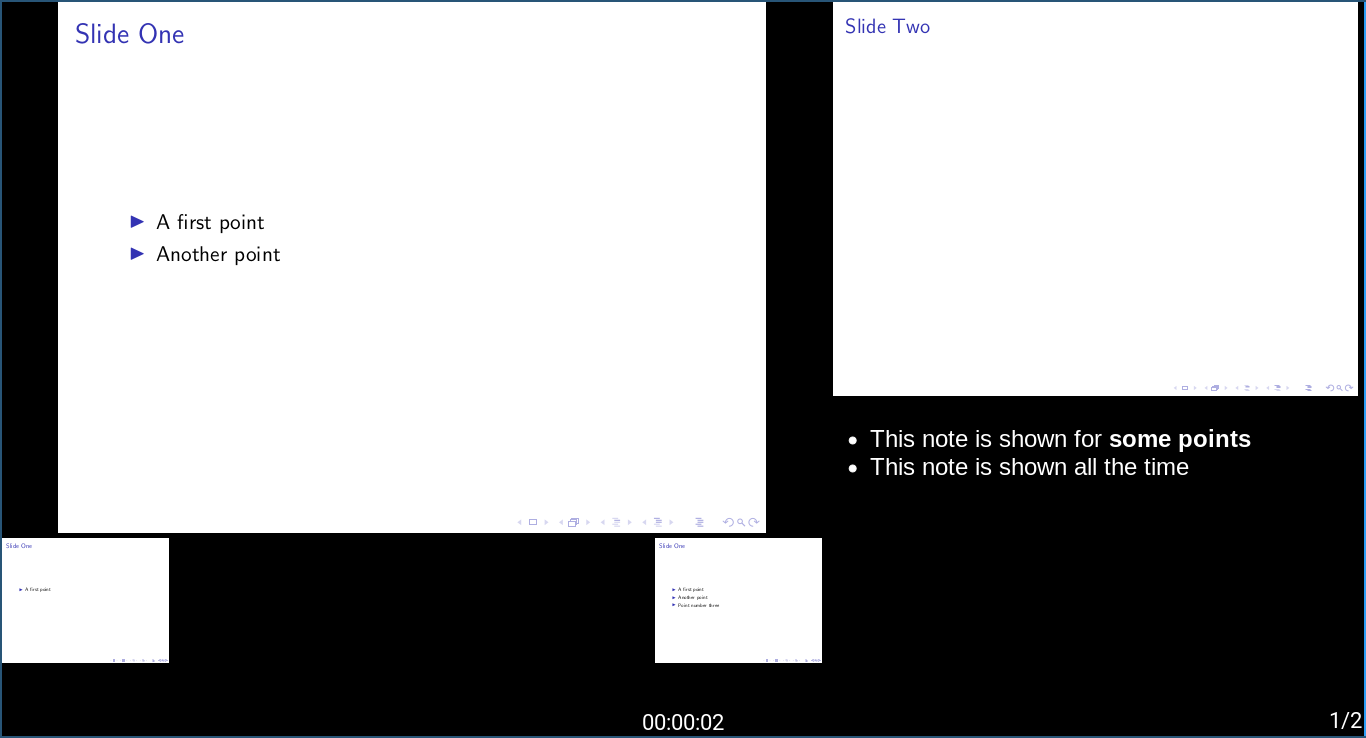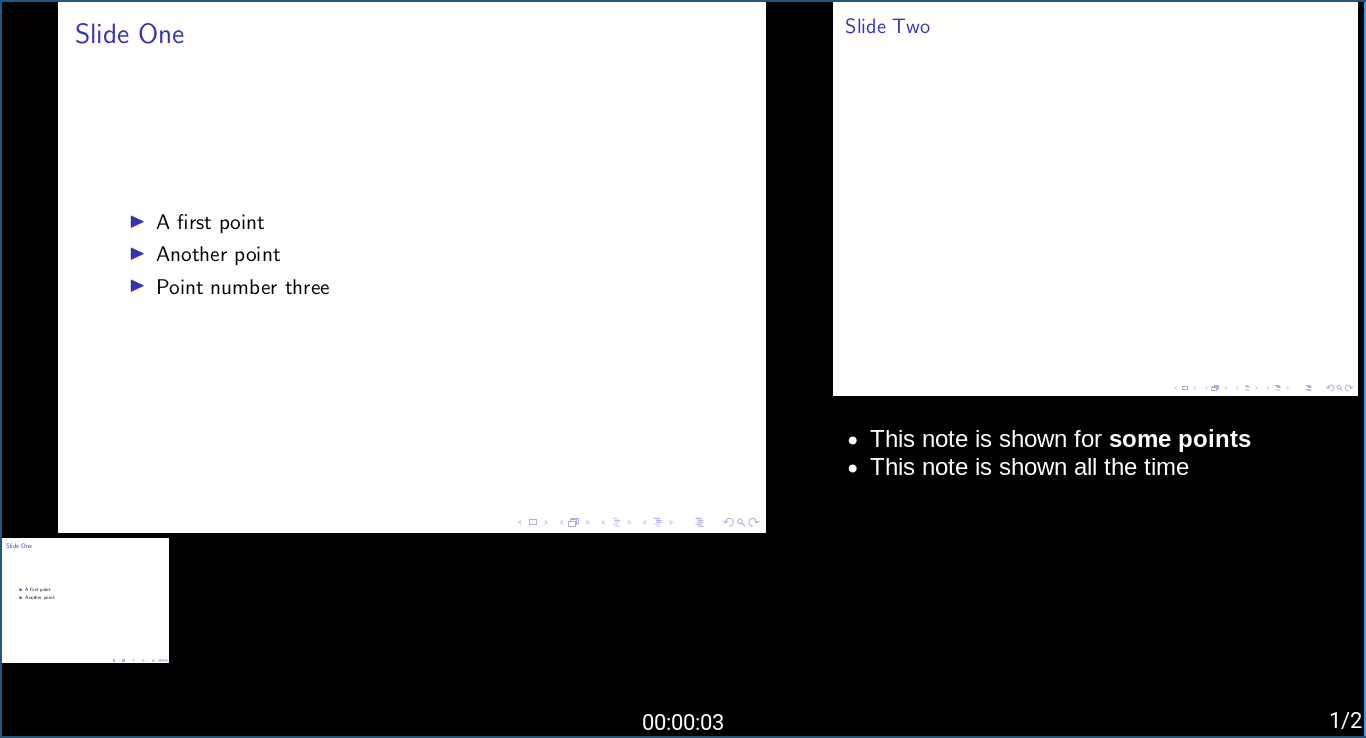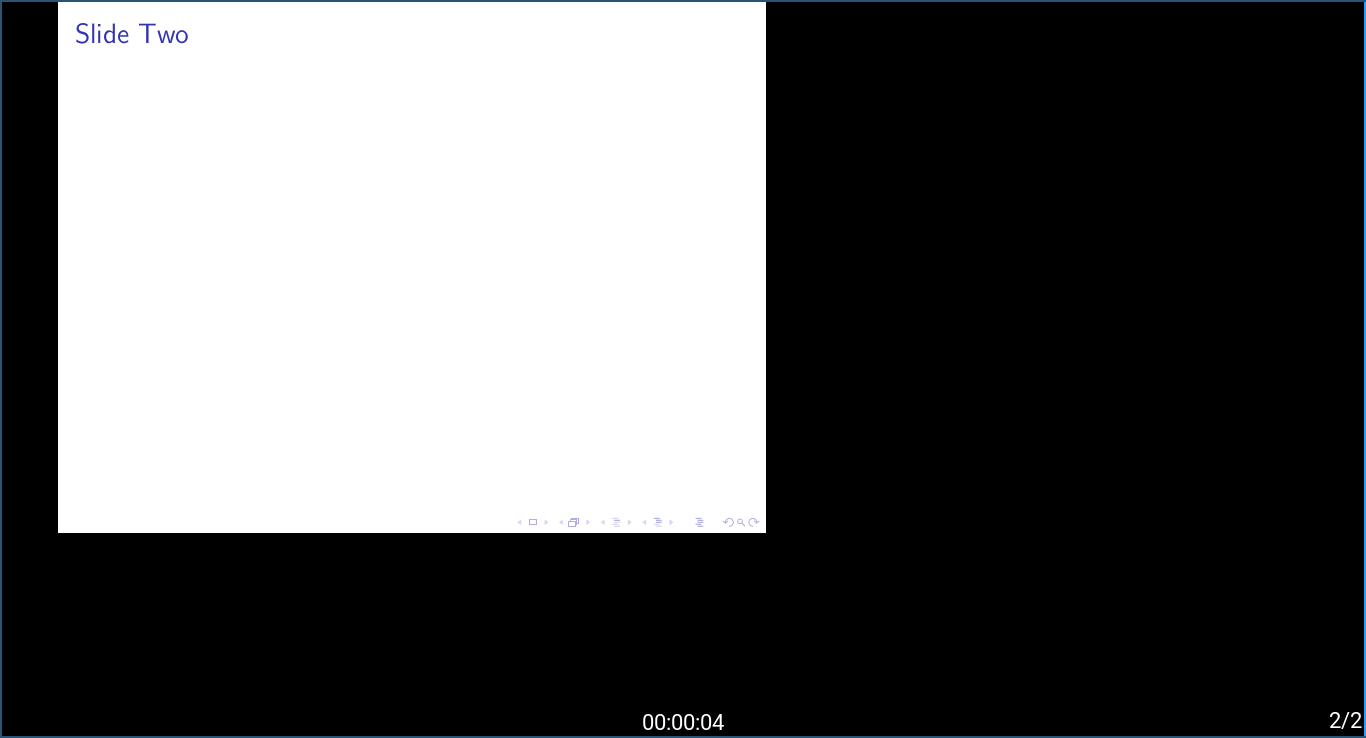Giving presentations with LaTeX Beamer and pdfpc
If you, like me, give scientific presentations from time to time, chances are that you are using LaTeX and its beamer class. The output is usually a PDF file that can be shown with pretty much every PDF viewer in some full screen presentation mode. A significantly more capable tool for displaying PDF presentations is pdfpc. It has a lot of nice features that are familiar from dedicated presentation tools like Microsoft PowerPoint or LibreOffice Impress, most importantly support for a dual-screen setup with a presenter view in addition to the full screen slides visible to the audience.
One of the most useful features in my opinion is the ability to add presenter notes to every slide. And the really cool thing is that you can embed these notes invisibly into the PDF by using the LaTeX package pdfpc. It may look like this:
\documentclass{beamer}
\usepackage{pdfpc}
\newcommand<>{\talknote}[1]{\only#2{\pdfpcnote{- #1}\relax}}
\begin{document}
\begin{frame}{Slide One}
\talknote<1>{This note is only shown in the beginning}
\talknote<3-4>{This note is shown for **some points**}
\begin{itemize}
\item<2-> A first point
\item<3-> Another point
\item<4-> Point number three
\end{itemize}
\talknote{This note is shown all the time}
\end{frame}
\begin{frame}{Slide Two}
\end{frame}
\end{document}
I defined a newcommand called talknote to be able to add overlay specifications to notes.
This way, I can easily add notes that are only displayed for some time while flicking through the overlays of a slide.
The notes are also formatted as list items (pdfpc understands Markdown).
The command pdfpcnote is provided by the pdfpc package.
When opening the produced PDF file with pdfpc and going through the slides, the presenter view looks like this:
